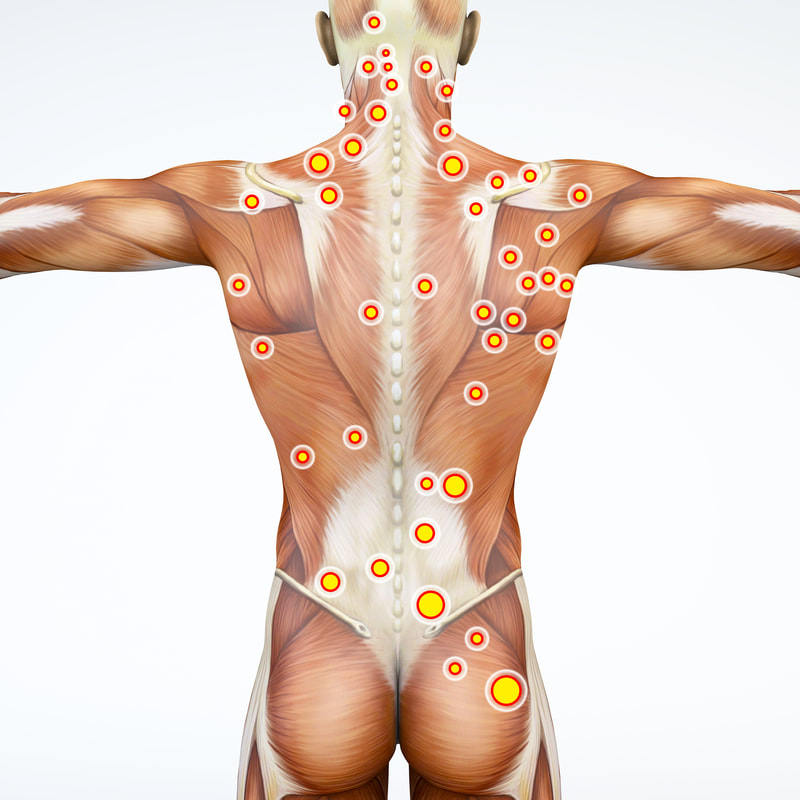|
Most clients that I see in my massage practice are dealing with some level of pain. Pain can mean a multitude of things, so understanding what kind of pain you're dealing with is important for the treatment. When clients describe their pain as a deep, burning, dull ache that sometimes travels to another part of the body, I instantly think Trigger Point.
A trigger point is a hyperirritable spot in a muscle that is the tightest part along a taut muscle. It can be hot, hard to the touch and usually has radiating pain. For example you may have a trigger point in your trapezius (upper shoulder area) that you can feel the sensation creep up your neck, sometimes even causing migraines or tension headaches. It is very normal for people to have trigger points at some point in their life. Repetitive overuse injuries, heavy lifting, poor posture, direct injury, mental/emotional stress that causes clenching of muscles and even being sedentary too long can all cause trigger points. Healthy tissue often feels supple and elastic making it easy to palpate other structures. Trigger points form when healthy tissue becomes dysfunctional by not being able to return to its original shape after the muscle contracts. This makes the tissue feel “ropey” or “cordlike” and over time, if not treated, the muscle becomes chronically shortened cutting off a sufficient amount of blood supply to this area creating a build up of metabolic waste resulting in pain. Lucky for you, treating each trigger point is quite easy. For some, pain may be alleviated after the first session but for others it may take a few treatments to start feeling results. It is important to note that though the application of trigger point therapy is simple, treating pain in the entire body can be a challenge. This is where finding a good massage therapist or other healthcare professional to work with is crucial to healing.
2 Comments
Leave a Reply. |
AuthorHi! Archives
September 2021
Categories |
Services |
Company |
|



 RSS Feed
RSS Feed